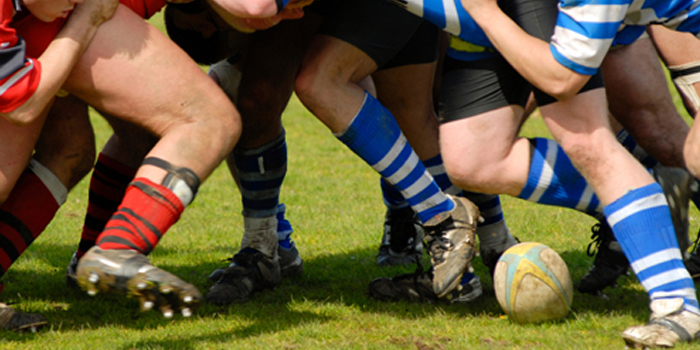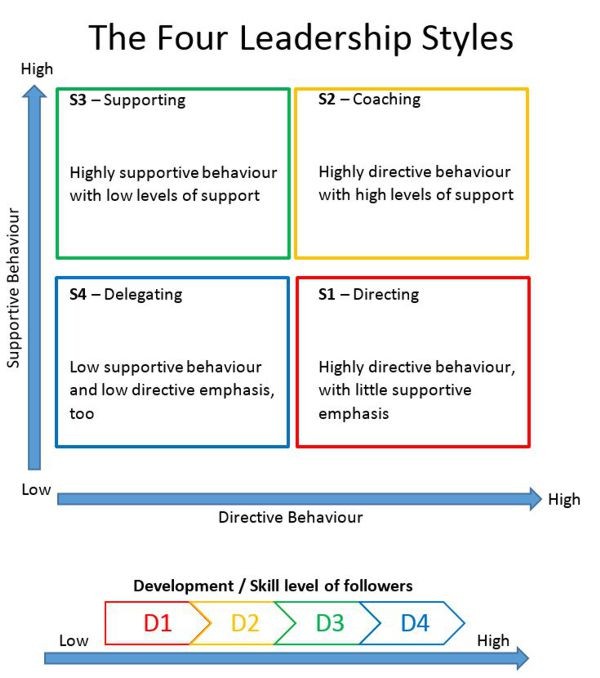
A few caveats before I begin this article:
Firstly, I have never worked in the American college sports system and am unaware of the NCAA guidelines and regulations regarding working with athletes. Secondly, while I have used the following system in professional rugby, I am unsure if it will translate fluently to college sports. The premise is the same based on development of mutual trust and respect between coaches and athletes at all levels of performance.
The leadership model below has been taken from the world of business management. I refer to it as a quadrant management system but it is equally applicable to the world of sports. I have used it over numerous years with teams that I have been involved with.
The system also relies heavily on degrees of freedom, a term I use taken out of its true context in statistics theory. According to Wikipedia it is defined as:
“The number of independent ways by which a dynamic system can move, without violating any constraint imposed on it, is called number of degrees of freedom.”
Source: http://www.educational-business-articles.com/situational-leadership-theory/
To summarize the coaching details of this model:
Quadrant 1
This is a dictatorial coaching style. Every detail is planned out including training days, exercise selection, sets, reps, and load. There are no degrees of freedom allocated to the athlete. This would equate to year one of a program or a period where the coach begins working with a new athlete. This is the time it takes for the coaching relationship to develop and for the coach to identify the strengths and weaknesses of the player. This is the freshman year in a four-year program. The entire process may be able to be accelerated if a player is deemed to be a redshirt freshman.
Quadrant 2
This is a subtle shift from no degrees of freedom to a single degree of freedom, allowing discussion between the coach and the athlete. In this quadrant the coach still decides all but one aspect of the program. This aspect will be exercise selection; the coaching staff will still determine the categories of exercise selection but the player will now have the choice of which exercise in each category he or she wants to do to optimize performance.
The categories maybe as simple as upper body push and pull, or in regards lower body training they may be explosive movements, squat movements, hip-dominant movement, single-leg movements, hamstring specific, or even a power selection versus a strength selection. These details are all dependent on the overall program philosophy of the head of strength training. This can be used in conjunction with the Explosive Strength Deficit results to determine if there is a shift in focus from a more strength-based to a more power-based program design.
Quadrant 3
When the athlete reaches the junior year of college, the program now allows for more of a consultative approach between coach and athlete, in which there is discussion of the goals. Now the athlete is the decision-maker, specifically now that the athlete has two degrees of freedom to own in the development of the program. These two degrees of freedom, I suggest, are exercise selection and periodization (sets, reps, intensity, and loading protocols). They will be able to choose from a list of methods that have been developed by the coaching staff and proven over time. See my previous article on programming, "23 Loading Methods for Effective Set and Rep Schemes."
Quadrant 4
Finally, in the athlete’s senior year the accumulated knowledge that he or she has developed and the training experiences that they have been exposed to will allow them the earned right to develop their own program. This program will be based around three degrees of freedom. The stage of development now allows the athlete to choose the days of the week that they will train, in addition to the exercise selection and periodization of the previous quadrant. They will choose whether to train with a two-a-day, or two days, or whatever permutation is decided upon, with the coach now as an advisor. The proviso on this is that the program obviously must have performance on game day as its outcome. It cannot just be a program designed for looking good, but must also be a targeted attempt to optimize athletic performance week in and week out.
All these developments in programming are achieved by regular interviews with the player and the strength and conditioning coach. Something that I continue to do every four to six weeks with my playing group is to chat about what they need to do within the confines of the rugby program to optimize performance on game day. Some questions that I ask at these interviews are:
- Who is the best player in your position in world rugby? What makes him the best?
- What is your limiting factor for improved rugby performance?
- How do we program what you need to do into the team's weekly plan to ensure you are doing what you need to get better?
From these consultations with the players, we can develop the best possible program to at least give us a better than average chance at optimizing performance. For some players it will be an extra upper body weight session, or an extra speed session, or a decreased focus on strength training and a shift towards a more velocity-based system. For reference, please read my article, "A Simple Flow Chart for Athlete Programming."
In closing, and to summarize this treatise, the following ideas continue to be at the forefront of my thinking;
- Irrespective of how fitter, faster, or stronger you make your players, you will be judged purely on the win/loss record of the team.
- We as coaches are process-oriented but outcome-judged.
So everything we as coaches put in place requires the buy-in from the players who deliver the program in the cauldron of performance. If it is not useful to getting the W on game day, then why are we doing it in the first place? To assist in the development of these processes, we as coaches need to:
- Treat each player like the individual he or she is. Individualize to prioritize to optimize.
- Allow training age to dictate degrees of freedom/self-determination.
- Utilize the exercise selection chart.
- Utilize loading methods and cycles.
- Utilize an optimal training split.
- Utilize needs-based programming.
Programming for each athlete needs to consider all of these factors in order to achieve success.












Hi Aleksa, in all my testing protocols which actually are quite small in number, we work within the breaks in a season to ensure no issues with the rugby practices, we will have about 6 times a season that we can test, although with Body Composition we test based on results to standards, if they fall into the RED group it is every 2 weeks, AMBER is every 6 weeks, and GREEN every 12 weeks, we collect speed data every speed session, twice a week, and we go down to heavy singles, doubles & triples every 3 - 4 weeks in the weight room, so we have estimated 1RM's, check these web sites out for the details you request, they are basically testing the same qualities of repeat efforts at near maximal intensity: http://www.topendsports.com/testing/tests/rast.htm AND http://www.topendsports.com/testing/tests/phosphate-recovery.htm hope this assists, ashley